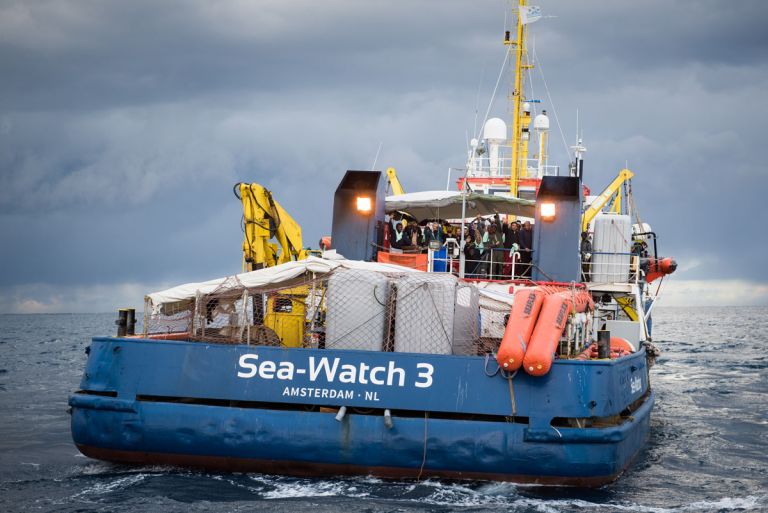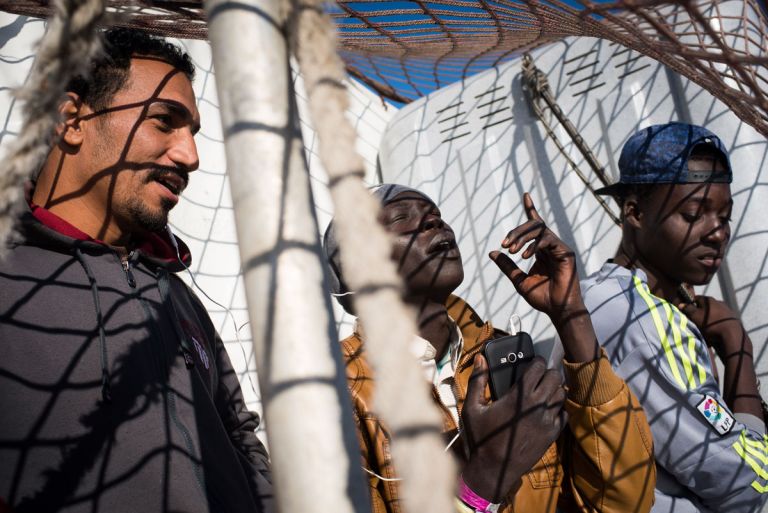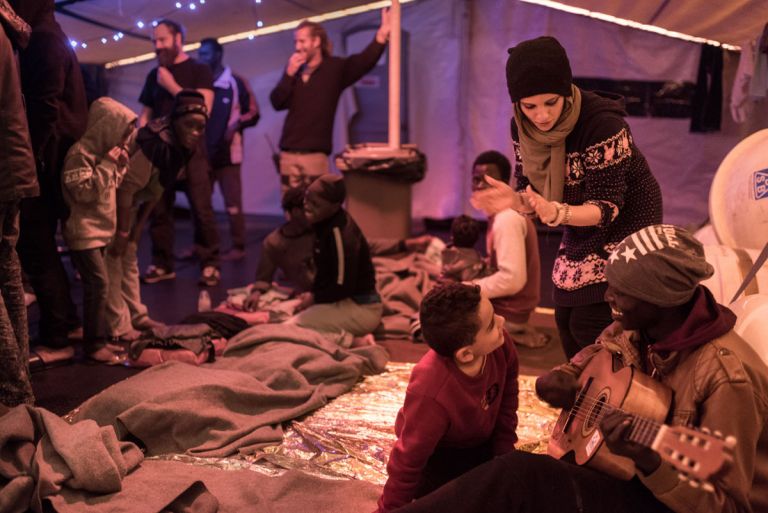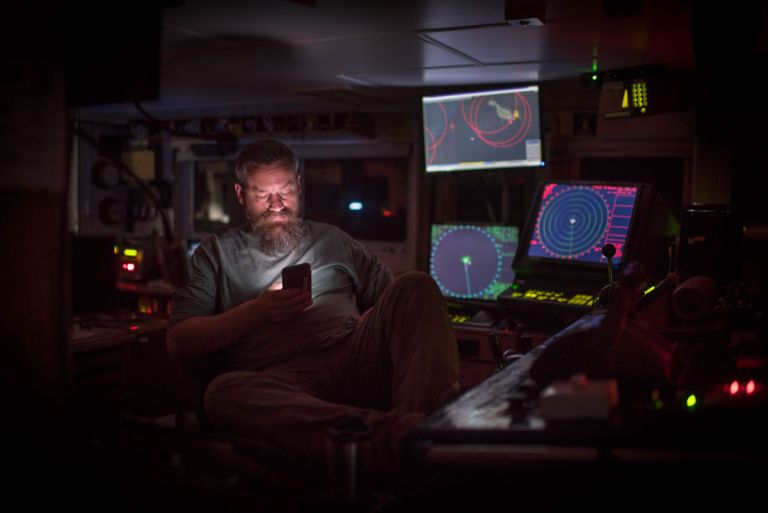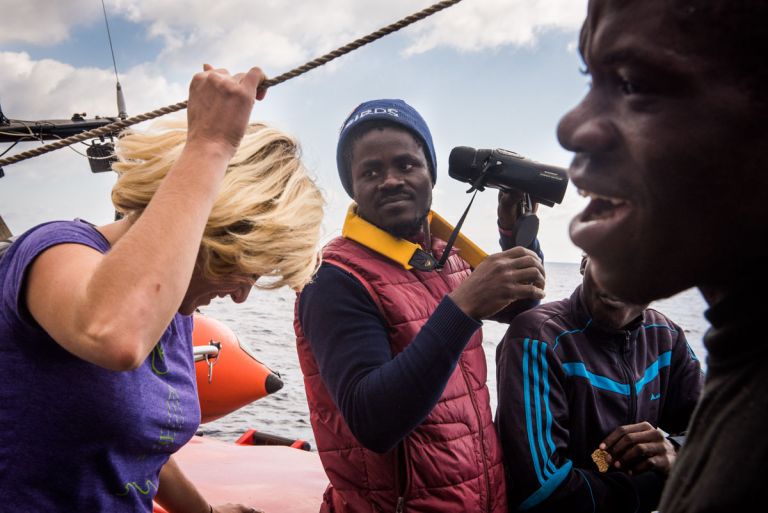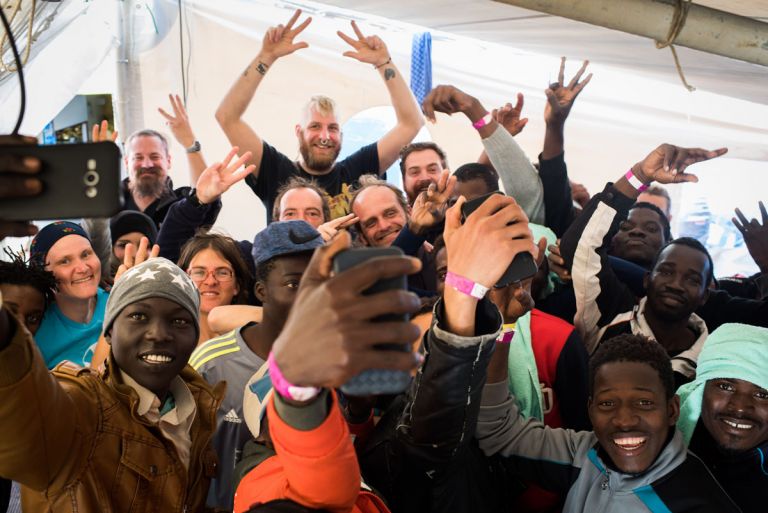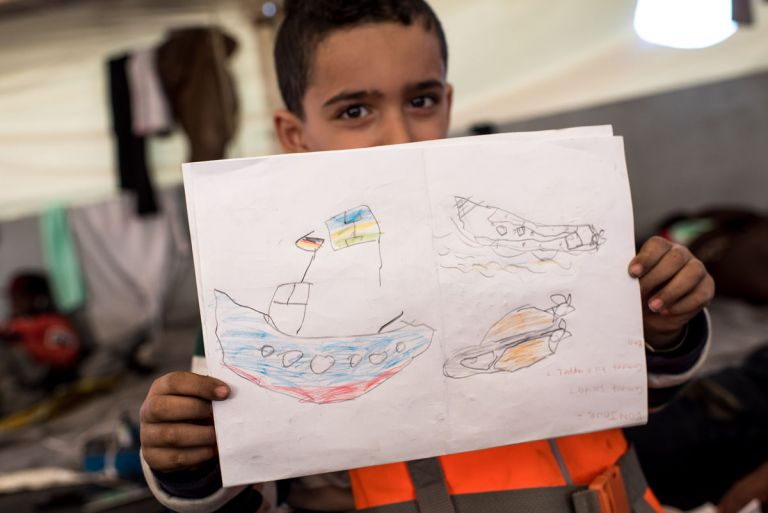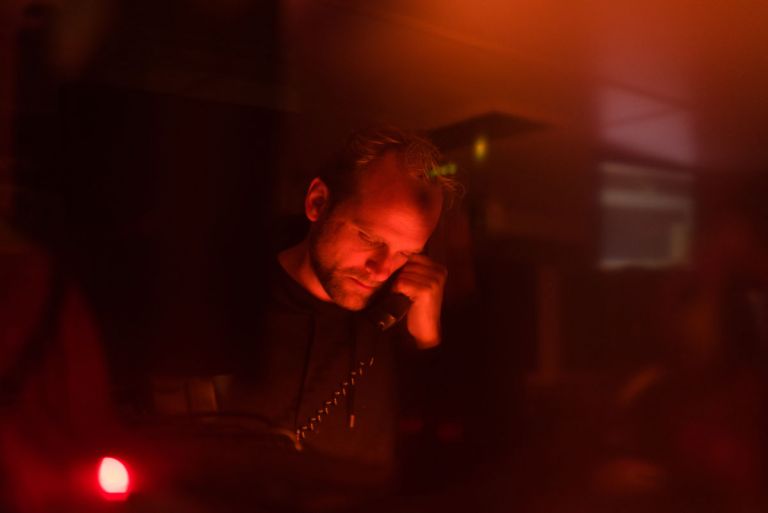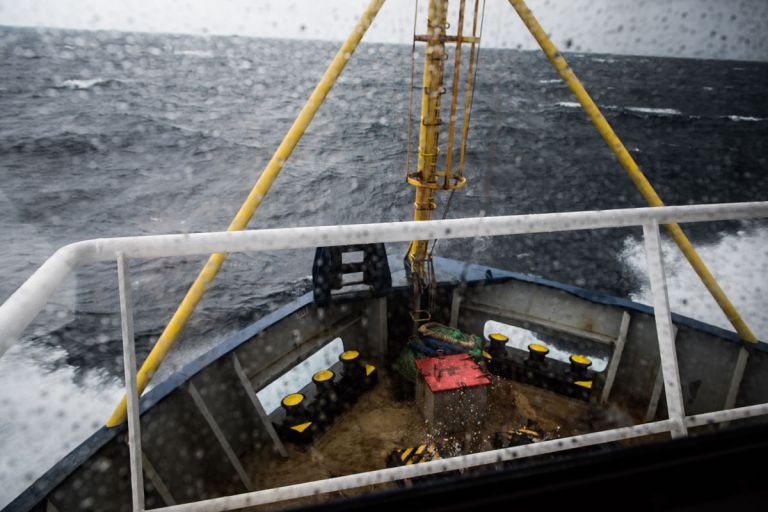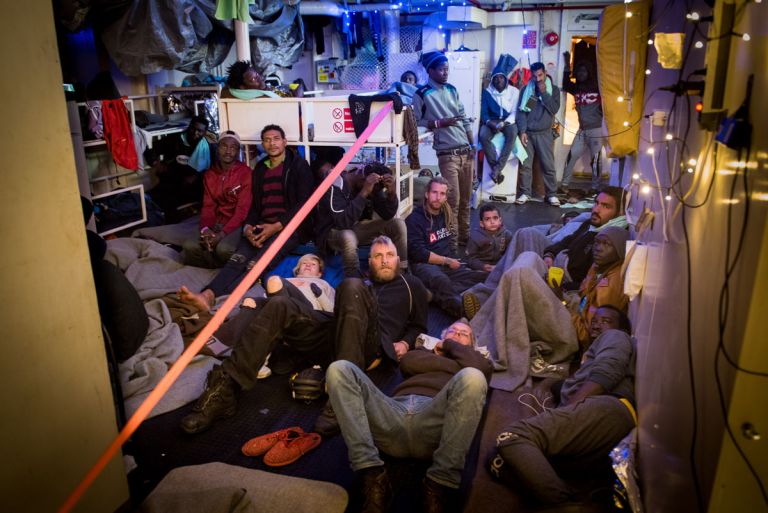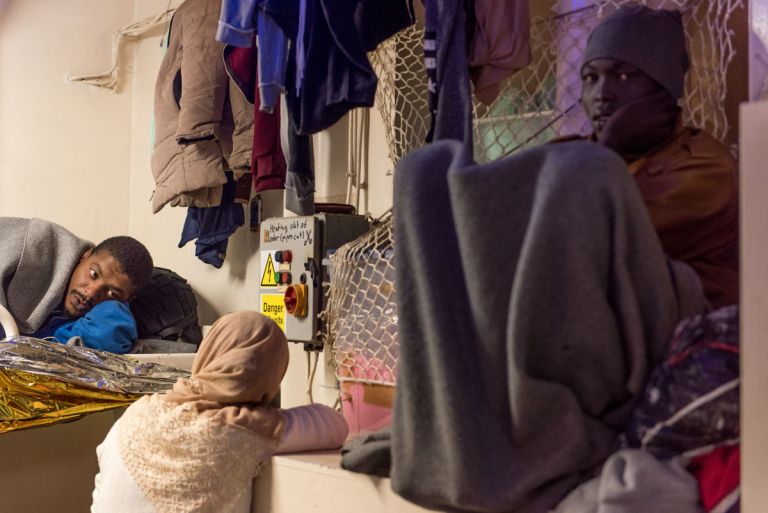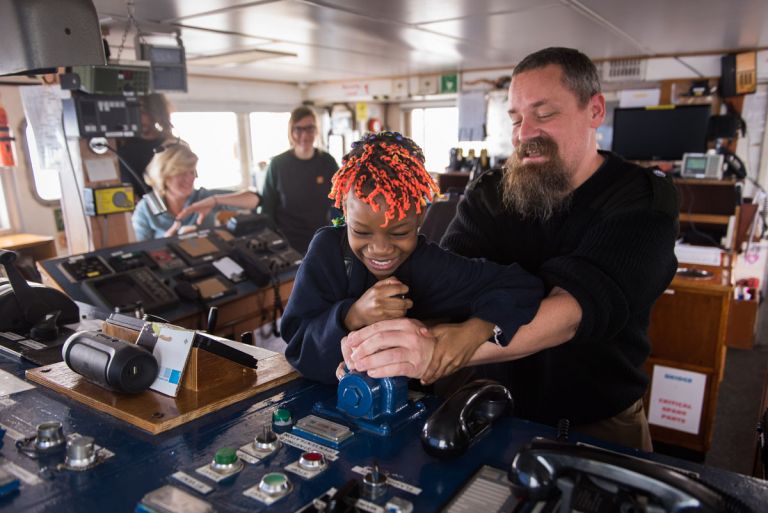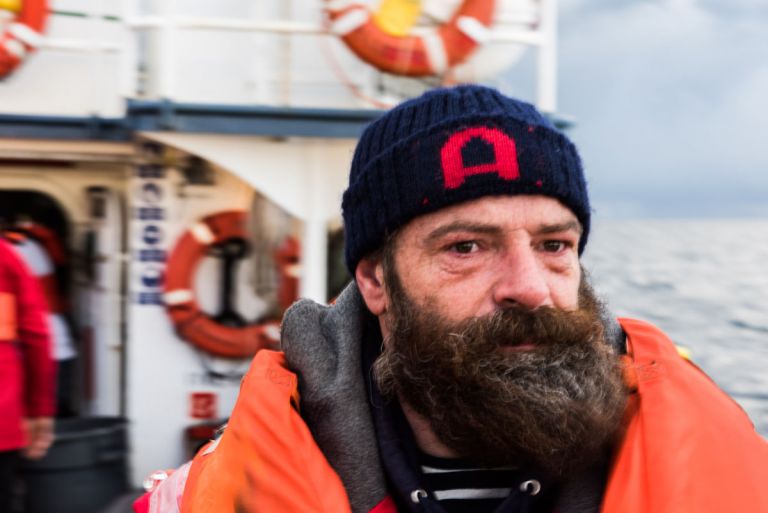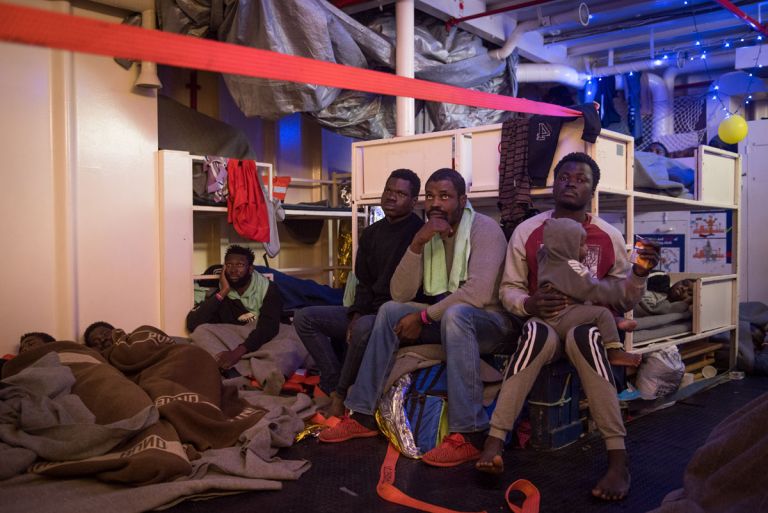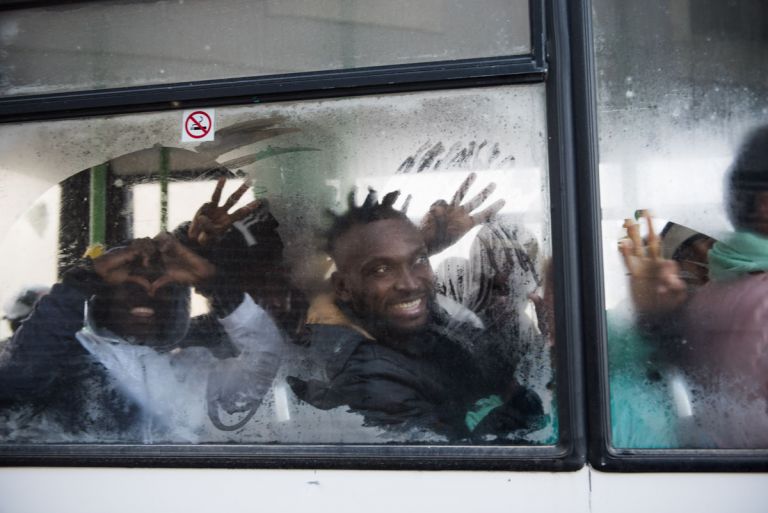In December 2018, two days before Christmas Eve, 54 people crossed paths in the central Mediterranean Sea: 22 came from the north on a 50-metre-long, fully equipped rescue vessel. Thirty-two came from the south on a crappy grey rubber dinghy. That this boat had made it 27 nautical miles to the point where it met the Sea-Watch 3 alone seemed like a Christmas miracle. The fact that there was a rescue ship in place was another lucky coincidence: As a result of a two-year-long smear campaign against civil sea rescue organizations, the Sea-Watch 3 was at that time the only operational rescue ship in this deadliest sea area of the world.
As the crew of the rescue ship takes the passengers off their refugee boat, they all embark on an odyssey together: Despite the clear requirements of the Law of the Sea and the Geneva Refugee Convention, none of the relevant authorities wants to assign a safe harbour to the Sea-Watch 3. It takes 28 EU states 19 days to come up with a plan for the distribution of 32 people – while in Germany alone more than 30 cities have officially declared their readiness to receive more survivors from the Mediterranean. Nineteen days, which put everyone on board the Sea-Watch 3, physically and psychologically, to a hard test. But also 19 days in which a former offshore supply ship became a microcosm of what Europe could and should stand for: a place of solidarity, respect and peaceful togetherness – even when the rest of the world behaves in a hostile manner.
As a long-time volunteer Media Coordinator for Sea-Watch, the photographer was part of the crew during this most ambivalent mission.
